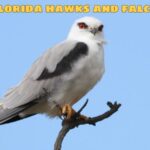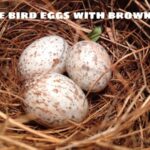The European Starling, also known as Sturnus vulgaris, is a bird species that has captivated ornithologists, nature enthusiasts, and everyday observers. Recognized for its striking plumage and complex vocalizations, the European Starling holds a unique place in both ecological systems and human culture. In this article, we will explore the biology, habitat, behaviors, and the broader impact of this fascinating bird.
Overview of the European Starling
The European Starling is a medium-sized passerine bird native to Europe, Asia, and North Africa. However, due to human introduction, it has become a global species, thriving in diverse habitats around the world. Some key physical and biological traits include:
- Size: Approximately 20 cm (8 inches) in length with a wingspan of 31–44 cm (12–17 inches).
- Weight: Weighs between 58 and 100 grams (2.0–3.5 oz).
- Plumage: During the breeding season, its iridescent black feathers shimmer with purple and green hues. In winter, its plumage features white spots.
- Lifespan: The average lifespan ranges from 2 to 5 years in the wild, though some individuals live much longer.
Habitat and Distribution
Native and Introduced Ranges
- Native Range: The European Starling originates from temperate regions of Europe, Asia, and North Africa.
- Introduced Range: In the 19th and 20th centuries, European Starlings were introduced to North America, Australia, New Zealand, and South Africa. For instance, in 1890, approximately 60 starlings were released in New York City, and today, their population has exploded across the United States.
Preferred Habitats
European Starlings are highly adaptable and occupy diverse environments, including:
- Urban Areas: Cities and towns where they nest in buildings and forage in parks.
- Agricultural Lands: Farmlands provide abundant food sources.
- Natural Habitats: Grasslands, woodlands, and wetlands.
Their ability to thrive in varied conditions is one of the reasons for their expansive global presence.
Behavior and Diet
Feeding Habits
European Starlings are omnivorous and opportunistic feeders, consuming a wide range of food:
- Insects: Beetles, caterpillars, spiders, and other invertebrates make up a significant part of their diet, especially during breeding seasons.
- Fruits and Seeds: They consume berries, grains, and seeds when insects are scarce.
- Foraging Techniques: These birds are known for their unique “probing” behavior, using their sharp beaks to search for food in soil and vegetation.
Social Behavior
European Starlings are highly social birds:
- Murmurations: Large flocks of starlings create stunning aerial displays, known as murmurations, which serve to confuse predators and communicate within the group.
- Nesting Colonies: They nest in cavities and often compete aggressively for nesting sites with native birds.
- Vocalizations: Renowned for their mimicry, starlings can imitate sounds from other birds and even human-made noises.
Reproductive Cycle
Mating and Nesting
The breeding season for European Starlings typically occurs between March and July. Key aspects include:
- Monogamous Pairs: While starlings often form monogamous pairs for a breeding season, they may change partners in subsequent seasons.
- Nesting Sites: They prefer tree cavities, building crevices, or artificial nest boxes.
- Nest Construction: Males initiate nest building, using grass, twigs, and feathers to attract a mate.
Egg Laying and Incubation
- Clutch Size: Females lay 4–7 eggs per clutch.
- Incubation Period: Both parents share incubation duties, lasting about 12 days.
- Fledging: Chicks fledge approximately three weeks after hatching, though parents may continue feeding them briefly.
Ecological Impact
Positive Contributions
- Insect Control: By feeding on agricultural pests, starlings provide natural pest management.
- Seed Dispersion: Their diet aids in the dispersion of seeds, contributing to plant diversity.
Negative Effects
- Competition: European Starlings compete aggressively with native species for nesting sites and food.
- Crop Damage: Large flocks can devastate crops, leading to significant agricultural losses.
- Invasive Species: In regions where they have been introduced, their rapid population growth often disrupts local ecosystems.
Conservation and Management
Conservation Status
- IUCN Red List: The European Starling is classified as “Least Concern” due to its extensive range and stable population.
- Population Control: In regions where they are invasive, efforts to control their numbers include habitat modification and the use of deterrents.
Balancing Ecosystems
Conservationists emphasize the importance of balancing ecological systems by:
- Protecting Native Species: Encouraging the conservation of species affected by starling competition.
- Habitat Management: Creating nesting opportunities for native birds.
Interesting Facts About European Starlings
- Mimicry Masters: European Starlings can mimic over 20 different bird species and various human-made sounds.
- Global Population: The global starling population is estimated to be over 300 million.
- Cultural Symbolism: In literature and art, starlings have been depicted as symbols of communication and adaptability.
Conclusion
The European Starling is a remarkable bird with a rich history and complex relationship with humans and ecosystems. From its dazzling murmurations to its adaptive behaviors, the starling continues to fascinate and challenge our understanding of avian life. While their invasive tendencies pose ecological challenges, their role in pest control and seed dispersion highlights the dual nature of their impact.
Whether admired for their beauty or managed for their dominance, European Starlings remain an enduring subject of study and appreciation in the natural world.





